After a refreshing tour of the Shore Temple, we made our way towards the hillock at Mahabalipuram. The hill is said to contain numerous heritage monuments from the 7th century CE onwards. These groups of monuments consist of rock-cut caves, monolithic shrines, cave sanctuaries, and structural temples from different eras. These precious historical constructions were accorded the status of a UNESCO World Heritage Site in the year 1984.
As we walked towards the hill, the cool breeze of the morning was gone. The Sun was shining brilliantly. It was harsh but bearable. I wonder if December is so hot in these parts, how terrible would the summers be.
The legend of Mahabali
Mythologically, Mahabalipuram is said to have been founded by Mahabali, a daitya (demon) king who was the grandson of Prahalad (the same one because of whom Hindus started the practice of Holi) and a descendant of sage Kashyapa.
According to the local legend, King Mahabali was once a benevolent and able king and ardently devoted to the Hindu god, Vishnu. Bali was also as powerful as he was kind. After conquering the lands on Earth, he defeated Indra, the king of the devas (celestial beings), and took over the heavens. Bali not only defeated him but also showed the world, how a great ruler should behave. His popularity made many jealous of him especially Indra.
Indra had lost control of svarga-lok (heavenly kingdom) to Mahabali, and he desperately wanted his celestial kingdom back.
As time passed, Mahabali became arrogant and vain. Shukracharya his teacher, once called him, “Bali, You have now conquered the three worlds but if you wish to always be the Lord of the three worlds, you have to perform 100 Ashwamedha Yagnas. Doing so, you will always be the king of the 3 worlds.” Bali who respected his teacher accepted in an instance and announced that he would perform the Yagna. Taking advantage of that moment, Indra conspired to bring about his demise at the hands of Vamana, considered to be the fifth avatar of Vishnu.
People came from far and near to witness the great sacrifice and to benefit from his generosity. Just when the final Ashwamedha Yagna was about to be completed, there arrived a young brahmana of unusually short stature. In Hindu mythology, he is referred to as Vamana which in Sanskrit means dwarf or “small in stature”. As per custom, Mahabali asks the boy to wish for anything he wanted. The Vamana held an umbrella made of palm leaves over his head. According to the legend, he only asks for land that he could cover in three strides. In his haughtiness, Mahabali accedes to his demand and asks the Vamana to measure his 3 paces of land and take it.
The dwarf Vamana suddenly starts to grow and becomes huge, taking the form of Trivikrama. With his colossal legs, he covers the whole of Earth in his first step. With the second he covers the heavens. By then Mahabali realized that his guest was none other than Vishnu.
On completion of his first two strides, the Vamana asks Mahabali, where should he put his third step. Mahabali says: “In my arrogance, I thought everything in the three worlds was mine to give. You’ve shown me my rightful place. Place your foot on my head.” And with the third step, Vishnu gently placed his foot on Bali’s bowed head.
The benevolent king surrenders himself to Vamana, and requests to be sent back to live with his ancestors in the patal-lok (netherworld). This day of the great sacrifice by Mahabali is celebrated even today as Bali Padyami, during the Diwali festival. I understand logic fails with these mythological stories but then the truth too has many a time shocked us from our beliefs.
The ancient sea-port of Mahabalipuram
Although the ancient history of Mahabalipuram is shrouded in myths, some scattered evidence suggests that it was a significant location even before the monuments were built.
The “Periplus of the Erythraean Sea“, an account by an anonymous Greek navigator of the first century CE refers to the harbor along with Poduke – current day Pondicherry – as a port north of the Kaveri river.
On the western side of Mahabalipuram is a hill region called Mallar. Mallar was a flourishing seaport during ancient times around 200 BCE. But natural geographical changes over the years resulted in the seaport moved to Mahabalipuram.
Of the numerous temples of Mahabalipuram, the credit mostly goes to the Pallava kings. They claimed authority over the surrounding Tamil-speaking region from the sixth to ninth centuries CE. The founder of the Pallava dynasty was Simhavishnu, also known as Avanisimha. He was the first Pallava sovereign, who extended his influence beyond Kanchipuram and ruled between 550 to 580 CE.
Mahabalipuram gained prominence during his reign, a period of political competition with the Chalukyas of Badami and the Pandyas of Madurai. By the end of the 6th century, it had become a principal port from where voyages to Sri Lanka and Southeast Asia were started.
While the Pallavas reigned, artisans carved the site’s natural granite outcroppings into elegant sculptures and many architectural forms. The Pallavas made Mahabalipuram their second capital, after Kanchipuram and brought new artistic styles to the prevailing culture.
Mahabalipuram’s architecture is linked to Simhavishnu’s son, Mahendra Varman I (580-630 CE), who was a patron of the arts. From his reign onwards that stone inscriptions begin to appear. Even though his reign is marked by multiple feuds with the Chalukya and the Pandyas, we also see a rise in the realm of religious and literary activities.
Mahendra Varman’s son, Narsimha Varman I, built on his father’s efforts and scholars attribute most of the monuments to him. It is believed that Mahabalipuram was renamed Mamallapuram after him who went by the name Mamallan because of his great wrestling skills. After a brief hiatus, when Mahendraverman II reigned for about 5 years, temple and monument construction continued during the reign of Rajasimha or Narasimha Varman II (690-728 CE).
The earliest Pallava temples were rock-cut cave shrines. These soon gave way to monolithic temples carved out of giant boulders, resembling chariots or “rathas” during the reign of Mamallan Narasimha Varman. It was during the rule of Narasimha Varman II or Rajasimha (700-728 CE), that the tradition of building structural temples began.
The Monuments of Mahabalipuram
Despite several debates among historians for over a century, the dates of these monuments are still not quite agreed upon, but all agree that there had been foreigners in Mahabalipuram in the first centuries of the Christian era. These exchanges did have their influences in the architecture of some of the structures on the hillock.
Some evidence like the Mandagapattu inscription from the time of Mahendravarman I, date some of the Mahabalipuram monuments to the early 7th century. The inscription reads that he “brought into existence a temple without utilizing either timber or lime (mortar) or brick or metal”, and the temple was dedicated to “Brahma, Vishnu and Shiva”. This was the first Pallava rock-built Hindu temple, and Mahendra Varman I and his descendants probably constructed others.
The monuments at Mahabalipuram can be grouped into four styles based on their mode of construction:
1. Monoliths – free-standing temples cut out of solid rock, most of which are locally styled rathas or chariots. An example would be the Dharmaraj Ratha.
2. Caves, excavated in the hill and used as temples, and which are called mandaps. Very prominent examples of these are the Varaha Cave and the Mahisamardini Temple.
3. Sculptured scenes, carved on the hill-edges. They illustrate all the styles of Pallava architecture. These belong to the period of Narasimha Varman I.
4. Structural temples are the ones built stone by stone, and not excavated out of a rock. The Shore Temple is an example of this type of construction. These mostly belong to the period of Narasimha Varman II.
As we made our way towards the hillock, a few boulder engravings can be seen right on the roadside. This is an example of a sculptured scene.
I few strides away we started with the exploration of a cave that depicts an immortal moment in the life of Krishna, an avatar of Vishnu.
Krishna Mandapa
This cave gallery is cut on the side of a boulder and shows a remarkable scene from Krishna’s life – of him lifting Mount Govardhan. The Krishna mandapa has a length of 29 feet and a height of about 12 feet. The monolithic pillars in the front were added later to support the roof of the cave.
For context, I am going to lay down as shortly as possible the story for the inspiration of this wall art. It is written that when Krishna was a young boy, the celestial king Indra brought a severe storm over his village. It rained for days and to save the people from his village, Krishna supposedly lifts up a mountain called Govardhan, using it as an umbrella. People and animals took shelter under the mountain and they were saved from the harassment.
This rock cut scene depicts that moment when Krishna lifts the Govardhan mountain to protect the villagers from the storm raised by celestial king Indra. For explaining the panel better, I have divided it into four sections. On the furthermost right, Krishna, himself is shown supporting the mountain on his left palm. Close to him are some love-struck gopika’s (female cowherds) standing and gazing at him in astonishment.
To Krishna’s right is Balarama, his elder brother. Balarama is standing with his left hand resting on the shoulder of a cowherd. To his right is a charming scene of a cowherd milking the cow. Behind Balarama, over his shoulder, you can see another representation of Krishna playing the flute with cows gathered around him.
Towards the far left, we see more animal and human figures taking shelter under the mountain.
Right next to the Krishna mandapa, we can find the Panch Pandavas Cave.
Panch Pandavas Cave
The Panch Pandavas Cave is a large cave temple with decorative lion pillars. The cave is mostly empty and undecorated. The design if completed would have consisted of a central rock-cut shrine, surrounded by pillared mandapa all-around permitting perambulation. The original rock face has been cut to a depth of one foot on the northern side and 5 feet at the base to create an adisthana. Over this platform, set back about half a foot from its edge, lies a facade of six pillars and two pilasters.
The pillars and the pilasters are mounted on square pithas with sejant vyalas adorning the lower part. The shaft issuing from the top of the vyalas is octagonal in shape. Behind the facade, is a second row of four pillars and two pilasters that are not vyala-based. The cavern of the temple is about 50 feet long with two lateral sides cut into till the back wall of the mandapa is reached.
The cutting of rock towards the back part of the shrine was never commenced. This plan of excavation with a central monolithic shrine surrounded by a double pillared cloister is a unique style that I have yet to see in a cave temple. The construction of this temple was most possibly started in the period of Paramesvara, if not his successor Rajasimha.
Yali or Vyala very similar to Gargoyle in European architecture. They usually have the stylized body of a lion and the head of some other mythical beast.
Descent of the Ganges
Just beside the Panch Pandavas Cave is the most dramatic of Mahabalipuram sculptures, an entire cliff sculpted with dozens of colossal yet graceful figures of humans, animals, and deities. This is a massive piece of art is the largest open-air sculpture I have witnessed to date. The Great Penance relief looks similar to the preliminary version that we saw earlier about three hundred meters away.
The monument is about 25 meters in length from south to north and 12 meters in height, carved on the side of a huge rock. This huge Mahabalipuram relief is considered a visual counterpart of the celebratory lineage recitations (prasasti) that begin various inscriptions left by the Pallavas at other sites. The Pallavas in simple terms tried to depict their lineage coming from the Gods. It is not uncommon for successful dynasties to depict themselves as Gods. many Egyptian kings had also tried to create a similar narration during the height of their reign. Of all the richly embellished cave temples, free-standing monoliths and open-air carvings during the quarter-century following Mahamalla’s great triumph of 642, none is more overtly charged with commemorative content than the Great Penance relief.
A mid-century artist named Mandhatar has been credited with the creation of this amazing masterpiece. Mandhatar flourished during the reign of Mahamalla Narasimha. He headed the Pallava atelier when victory monuments like the Great Penance Relief were being executed. The most defining part of the sculpture, in my opinion, is the descent of the Ganges. Right in the middle of the wall, dividing it vertically into 2 halves one can see a narrow fissure. It is believed to be depicting the holy Ganges river, which originates from the Himalayas. The rock-cut channels and footing immediately above this rock, suggests that there was a masonry water cistern to store water.
The design is such that water could flow from that fissure and stay collected in the tank below. It was also meant to depict the flow of time till at the base it reaches the Pallava Kings. It can be safely said that the Pallavas took the descent of Ganga as an important event and included it in their prasastis (epigraphs). The relief panel at Mamallapuram, therefore, depicts this important event. The presence of the three nagas in the central crevice is of utmost importance as one of them is supposed to be Nagini, the mother of Pallavas.
This part of the wall art focuses on Shiva, suggesting his key role in the episode depicted here. He is shown holding a trishula (trident), parashu (axe) and a snake in his three hands. His fourth hand is in varada mudra, suggesting granting a boon to the ascetic nearby. Five pairs of ganas are found, three of the left and two on the right. They are shown seated wearing a peculiar cap. A standing gana, with a tiger/lion carved on its belly, is part of Shiva’s retinue.
On the left, one can see a withered man in penance. It is believed to be Baghirath, praying for the Ganga to come to earth. He is said to have prayed to Brahma for a thousand years, requesting him to permit Ganga to come down to earth from heaven because only Ganga could release his ancestors’ souls and allow them to go to heaven. The myth of Bhagiratha’s penance, and resultant descent of Ganga from her celestial course through the valley. It does seem to accord better with certain aspects of the reliefs’ iconography.
The Gana with a lion’s head carved in his belly is known as Kumbandhas in the Ramayana. However, there is a big debate among scholars about the main narrative of the panel. At least since the eighteenth-century local tradition has maintained that Arjuna is the chief human protagonist, performing the penance called suryopasthana tapas on one leg. It is to be understood that this pose was not unique and many more characters have been written about that have used the same. On either side of Shiva, on the left and the right of the cleft, are shown Chandra and Surya respectively.
We find a variety of animals on this panel. The carvings at the bottom right are some of the finest elephant sculptures in India. The larger elephant exhibits a bifurcated tusk. It points towards an attribute of Airavata, the mount of Indra, who was a pure white elephant depicted with four tusks. The group contains two adults and six child elephants. Ten deer and antelopes, mountain goats, four monkeys, a hare, an iguana, one boar, a tortoise are among the other animals on this panel.
In front of the majestic elephants is a cat doing penance, with some mice surrounding it. The story of this hypocrite cat can be found in Hitopadesha and Mahabharata (Uluka Dutagamana Parva). It goes like this: A wicked cat once on a time took up his abode on the banks of the Ganga, abandoning all work and with his hands upraised (in the manner of a devotee). Pretending to have purified his heart, and for inspiring confidence in them, he told all resident creatures that it was now practicing a life of virtue. After some time, all the animals gave up their natural instinct and reposed trust in him. They surrounded it and applauded the cat. It was all of course a trap and the mice later realized it. The cat was not really in penance but just looking for the opportune time to grab the mice.
On the lower right, you can see an entire hermitage scene around a Vishnu temple. This is believed to be the Badari hermitage nestled in the Himalayas where all animals would live in peace and harmony. The three decapitated figures are said to represent the reigning Pallava, Narasimha Varman I, and his two immediate predecessors. Though none of the other reliefs exhibit such damage, the headless statues confirm the theory that Pallavas tried to portray themselves as descendants of Shiva and were desecrated by later rulers. Apart from a few broken noses scarcely any signs of deliberate defacing can be found anywhere else in the composition. Most probably, therefore, the vandalism was prompted more out of political considerations than anything else.
Looking at the masterpiece in its entirety, I could not find a specific theme. In my opinion, the panel was constructed entirely to suggest the ancestry of the Pallavas to be flowing down from the Gods. That might be the reason why various bubbles from history are depicted here and it eventually ends at the bottom center of the panel with the depiction of the first of the Pallava rulers.
Ganesh Ratha
While the ones I have written till now lie alongside a road, in the open area, we now move into a protected section, what is known as the Hill area. This age-old granite hill contains many monuments hidden within. This hillock formed of wooded rocks and boulders lies about a kilometer from the sea-shore.
The Ganesh Ratha is the first monument we encounter. It is a monolithic temple built during the reign of Parameshwara Varman in the latter half of the 7th century that resembles a chariot pulled during the Rath yatra.
Ratha Yatra or Chariot festival is a Hindu festival celebrated for Jagannath and associated Hindu deities
This west-facing temple is decorated with dvarpals (gatekeepers), lion pillars, and pilasters. It was once dedicated to Shiva and known as Aruna’s Rath. Some historians argue that because of Arjuna Ratha here, the huge wall relief also contains Arjuna’s penance. My knowledge on the subject is quite limited, but I would like to ask them – then why does the same exact relief appear again near the Mahabalipuram lighthouse.
At some point between 1799 CE and 1803 CE, the linga inside this temple was stolen by a Britisher. When the original linga was removed, an image of Ganesha was placed there and the temple came to be known as the temple of Ganesh. This presents us with another fact that names of monuments at Mahabalipuram were not fixed, and that the meaning behind Hindu temples, even when they are carved out of solid stone, can always be reinterpreted. This temple is still active and we paid our respects before moving on.
Varaha Mandap
We took a left turn from the Ganesh Ratha to reach the Varaha Mandap. This 7th-century temple was constructed during the reign of Narasimha Varman I.
The Varaha Cave Temple conforms to the Mamalla style, and has a large hall with a front row of four pillars and four pilasters supported by squatting lions. This excavation facing west is cut from a large whale-back boulder. It consists of a front mandapa with a shrine behind it.
The facade consists of a row of two pillars and two pilasters with Oma and a molded adisthana cut at the base. Projecting from the center of the adisthana is a rock-cut sopana with three steps. The two pillars and the two pilasters are placed a little behind the edge of the pattika and have well-defined lotus pedestals or padma-pithas.
In the pillars, the shafts are octagonal in section and are decorated immediately over the head by a broad malasthana and padma-bandha. The dvarapals flanking the entrance on either side are almost identical, stately in bearing and wearing yajnopavitas.
The cell in the center, where the deity once stood, is guarded by two dvarapals or guards in stone. Inside the cave there are four magnificent wall panels.
Varaha Panel
Carved on the northern end panel of the mandapa is the group of Varaha uplifting Prithvi from patala. In this group, the main figure is Vishnu as Varaha or the man-boar incarnation. Vishnu has four arms, two of which hold the chakra and the sankha, and the other two arms are thrown around the Bhu-devi, seated on the god’s uplifted and bent right knee.
Varaha is the third incarnation of Vishnu. It is said that when the asura Hiranyaksha dragged the Earth to the bottom of the sea, Vishnu took the form of a boar to rescue it. They fought for a thousand years after which the asura was slain. Thereafter Varaha, who is in charge of the law of gravity made the Earth very light and gently placed her on the surface of the sea where she floated like a turquoise ball. This is a representational story of how Earth was once a mass of water from where lands gradually rose, but these ancients had this knowledge beyond me. Sometimes I do feel the Greeks and the Hindus had extraterrestrial help and then they abandoned us for whatever reason.
His own right leg is placed on the serpent hood of the crouching Seshnaga below. Behind him, to his left is Brahma with three heads (fourth not shown in the bas relief) standing in tribhanga. Behind him comes a sage-like figure carrying a vina, perhaps Narada. Over Brahma and Narada at the top corner is a flying form of Chandra, shown as if emerging from the clouds with his hands in anjali.
Trivikrama Panel
Even though this cave temple is called Varaha Mandap, it also features a breathtaking relief of Vishnu in the form of Trivikrama, the giant form of Vishnu. Vishnu took the form of Trivikrama in order to subdue the asura king Mahabali as explained in the first part of this article.
In the Trivikrama panel, Vishnu is shown standing with his right leg firmly planted on the ground and left raised above his forehead. This shows that Trivikarma has already paced twice transcending measures that bounds of the Earth and the svarga-lok. He is eight-armed, three of his right arms carry the chakra, gada, and the khada while the fourth is held up with the palm up as required in the Vaikhanasagama, Three of his left arms carry the sankha, ketaka, and dhanus. The fourth arm is stretched straight towards his uplifted leg, the fore-finger pointing towards the foot.
Near his uplifted leg is shown Brahma, four-armed, seated on a padmasana offering puja. In the corresponding position at the other end of the panel, to the right of Trivikrama, is a four-armed Shiva, also seated in a padmasana. Both Shiva and Bhrama are shown at the level of the forehead of Trivikarma indicating their position in svarga. Between Trivikarma’s head and Bhrama on the left, shown in the attitude of flying is Jambavan with a bear’s face beating on the bheri(drum). On either side of Trivikarma at the level of his navel are shown Surya and Chandra in the posture of flight. Surya is placed below Shiva and Chandra below Brahma.
Gaja Lakshmi Panel
In the Gaja-Lakshmi panel, Lakshmi is seated on a full-blown lotus, her legs resting on a spread-out lotus leaf. The other lotus leaves shown vertically with their stalks, suggest the location to be a lotus tank.
On either side of her, are standing four celestial nymphs. The two nearest to her are carrying water pitchers in the palm of their hands. The other two nymphs follow holding on to the leading water carrier by the girdle. Over them are shown the heads of two elephants. The elephant on the right of Lakshmi is holding an inverted pitcher by its trunk.
Durga Panel
In the Durga panel, Durga stands four-armed on a padma-pitha. The lower right hand is in abhaya and left in kati, while the upper arms hold the chakra and sankha. Kneeling on her right is a devotee offering his own head, held up by the tuft with his left hand, while with his right hand, he is hacking it off with a long sword at the neck. On the left is another devotee seated on his knees in adoration. On either side of Durga are four dwarf ganas with pot bellies. On top is the head of a rearing lion emerging from the background, while on the left emerge the head of an antelope,
Such an association of lion and antelope with Durga is also found in an almost identical panel near the Shore Temple where a little form of Durga is enshrined in a niche cut into the chest of a squatting lion, while below, curled on the rocks lies an antelope in a sleeping position.
Roya Gopuram
After taking some pictures we followed the trail going up the hill. The trail led us up to Roya Gopuram. This structure does not belong to the Pallava time. It was added centuries later by the Vijayanagar rulers. The entrance was designed with steps and tall pillars.
I immediately recognized the carvings of the dancing-girls, a common occurrence in every temple, from my visit to Hampi – the base of the Vijayanagar empire.
We sat there looking over the town of Mahabalipuram, munching on the goodies Mani always has stored in her bag.
From the looks of it, this structure was abandoned midway. It was supposed to be a large tower but only the base was constructed.
From this structure, there are three trails going in different directions. We chose to go along the middle one. The trail gradually ascended to a higher point on the hill.
This structure was carved out of a rock. It is still functional and contains stored rain water. I am not exactly sure about the purpose of this tank like structure.
Pulipudar Mandapa
This excavation of a five-celled cave temple with an oblong mandapa in front is located at the highest point on the western side of the hill overlooking the Konerippalam tank. The facade line consists of four pillars and two pilasters. Both the pillars and the pilasters have their bases carved out into squatting vyalas in different degrees of finish. The shafts above the vyalas as well as other components have not been finished in their details even though the initial shaping has been completed.
Cut into the back wall of the mandapa behind the facade are five oblong shrine-entrances. While the excavation of four of them had progressed to a certain extent, the excavation of the fifth had just started when it was abandoned.
This was a dead-end, so we back-tracked from here back to the Roya Gopuram from where another two trails went in different directions. We climbed down the hill and hurried towards the south section of the hill. The trail leads to a whale-shaped boulder, superposed by another of about the same height. Steps carved in the stone led to the top of the boulder but I couldn’t find anything interesting up there.
Ramanujan Mandap
The path led us to the Ramanujan Mandap. This cave is not listed on the map. A banner near the cave refers to it as a Shiva Temple created in the Mammalan style during 640-674 CE.
In its original condition, it seems it was one of the finished cave temples in the whole series at Mahabalipuram. It is carved on the eastern scarp of a long whale-back boulder on top of the Mahabalipuram hill, almost at its center.
The temple consists of a large rectangular ardha-mandapa with one row of pillars on its facade and with three shrines behind it. At either extreme, beyond the pilaster, the vertical face of the rock affords space for two large dvarpala bas reliefs, which were totally chiseled off by later occupants, obliterating totally the original sculptures as well as the three inner shrines.
The two pillars and pilasters are vyala based. While the vyalas of the pillars face front, those of the pilasters in antis face each other. The vyalas are typical with three divaricating horn-like projections over the heads, sitting upright on their haunches.
For some reason, the reliefs on the side of this temple were destroyed. It is likely that the reliefs were in some way linked to the Pallava dynasty and just like the beheaded statues on the Descent of Ganges were removed by later kings.
Mahisamardini Cave
A few paces to the south of the Roya gopuram lies the Mahisamardini Cave. This area of Mahabalipuram was locally known as Yamapuri. This cave was also commissioned during the reign of Narasimha Varman I. The cave temple is built higher from the ground and a series of steps took us to the cave platform. The caves are all fronted with fine columns resting on seated lions, typical of the Pallava style. On the top of the same boulder is the Pallava structural temple Olakkannesvara, on top of which formed the lighthouse before the present one was built.
The cave temple consists of a long verandah with fluted columns and three shrines. Of the four pillars, one has been totally removed leaving only the bracket hanging down from the beam. The lost pillar is now replaced with a plain stone-cut column. The facade is divided into five bays. The floor and the ceiling of the mandapa behind the facade lie unfinished.
On top of the projecting adisthanas, are two lion-based pillars with circular shafts. The two pillars in the front row of the porch have vyalis sitting on their haunches. Placed inside the two pilasters of the portico on either side of the central shrine-entrances are double-armed dvarpalas. At a height of 3½ feet above the floor level of the mandapa, cut into the back wall are three shrine cells.
The shrine chamber is oblong and on its back wall, filling it totally is a large bas-relief of a unique form of the Somaskanda seated on a simhasana. Shiva is four-armed, the upper right holding what appears to be a roll of cloth. Shiva is in the sukhasana pose. Parvati is two-armed with the tiny Skanda on her right lap. While her left hand is resting on the top of the seat, her right hand is gently holding Skanda from behind. It is to be noted here that this Somaskanda panel is the only one that shows a Nandi and in addition to a devotee below.
The entrance to the southern cell is devoid of pilasters. The shrine cell is empty except for a very shallow socket. The entrance to the northern shrine resembles that to the southern shrine in having no pilasters. The cell is empty and there is not even a faint trace of any socket on the floor. At the base of the back wall are three rough cubicle projecting blocks.
Mahisamardini Panel
Occupying the whole of the northern end of the wall of the mandapa and filling the space between the adhisthana below and the uttira above is a large and finished panel showing Durga as Mahishamardini. Mahisamardini is depicted with her eight arms, riding her lion, and equipped with all her weapons provided by the celestial beings. She is shown riding astride a lion, holding the bow with her outstretched lower left hand, while her lower right is bent behind her ears as if drawing the taut bowstring to the full. The three other right hands hold a khadga, ghanta, and chakra and the other three other left hands hold a dagger, pasa, and a sankha. While the front pair of hands are shown as engaged in shooting with the bow. the pair of hands just behind are shown as if thrusting and stabbing simultaneously with the sword and the dagger.
She is attended by hosts of ganas and yoginis, and is in the war-like posture using a giant club. Below the Durga, is one of her yoginis also striking with a sword. Below the darting lion is another gana holding a shield and sword. Three other ganas behind the Durga, hold fight with shield and sword, while two more hold a parasol and chamara respectively for the goddess. An eigth gana is flying, carrying offerings on a plate.
On the other side in the ferocious battle is the buffalo-shaped Mahisasur surrounded by his demon warriors. Mahisasura is depicted in an equally powerful pose wielding defiantly a club in his hands. The merging of the buffalo-head with the human trunk is marvelous as also the depiction of his body-line from the tip of the crown between the horns through the snout down to the straight right leg suggesting defiance.
Vishnu Panel
Likewise in a panel of similar size on the southern wall, is a finished and deep relief of Vishnu as Anantsayi. He is yogasayana-murti reclining on the couch formed by Adisesha with its five hoods providing shade over the recumbent god’s head. Vishnu is two armed and at his foot are two asuras, Madhu and Kaitabha. They seem to be conspiring with each other as to how to strike at Vishnu. Below the feet of Vishnu is Bhu-devi kneeling down in prayer with her hands in anjali, while in front of her are what are believed to be two of the four ayudha-purushas, Sudarshana and Nandaka depicted as handsome youths, The other two ayudha-purushas are depicted as flying above Vishnu. The reclining figure of Vishnu is a picture of peace and calm in contrast to the virility and movement of Durga on the opposite panel.
This cave was probably dedicated to Shiva, perhaps the three forms of Shiva were to be installed in the three shrines.
By this time, we were out of breath. The heat had taken its toll. We walked back to the park near the Krishna butterball. It was surrounded by dozens of people wanting to take selfies.
The queue for selfies just kept getting bigger, so we decided to leave for an early lunch.
Secrets of Mahabalipuram
Much of history is debatable. It is said history is written by the victors. The knowledge I have gathered is mostly from guides and some historical books. I have tried my best, but it is quite possible that my interpretations might not be correct.
As we walked back to my car, the local shops had opened. The town is lined with these shops selling beautiful life-sized stone statues. Along with local delicacies, one can also find bakeries. Sunbathing is one of the must-do activities at Mamallapuram beach. Mamallapuram beach offers visitors a rare combination of historical significance and natural splendor.
From one of the shops, I purchased a wooden idol of Radha & Krishna, that would fit nicely with the other souvenirs that I have procured from over the world.
The ancient tradition of stone carving is still alive in the region, and rhythmic sounds of hammer and chisel on stone afford a glimpse of how these monuments, rock-cut caves, and sculptures came into being, almost fifteen centuries ago.
Thanks for reading. Please leave me a comment if you liked the post or follow my story as I try to explain the curious case of Krishna’s Butterball.
Disclaimer: The information presented in this article is based on the time I visited the premises. Note that there might be changes in the prices of merchandise and admission fees that might have occurred after this article was published. At times the facility might also be closed for repairs or for variety of other reasons. Kindly contact the facility or facilities mentioned in this article directly before visiting.
Usage of this site indicates acceptance of my Terms and Conditions.
Credits: The historical information presented herein is gathered mostly from local guides that were re-inforced via historical writings.

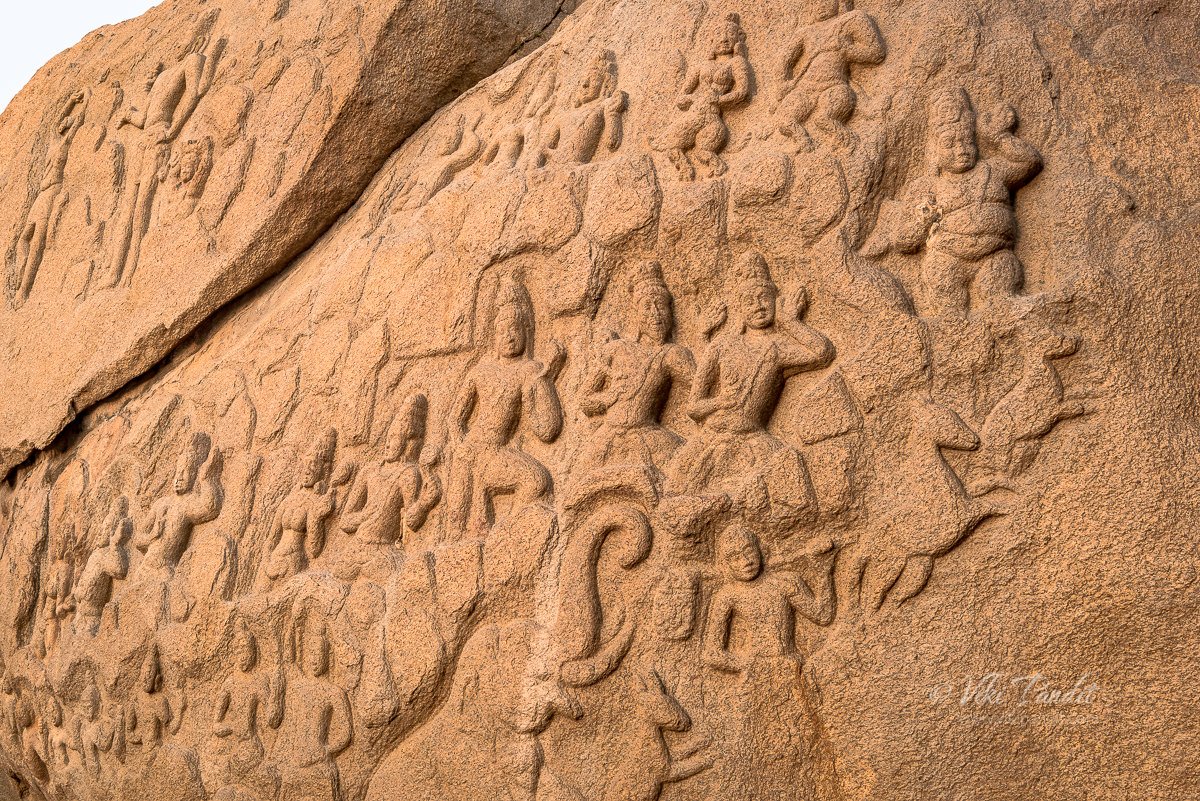


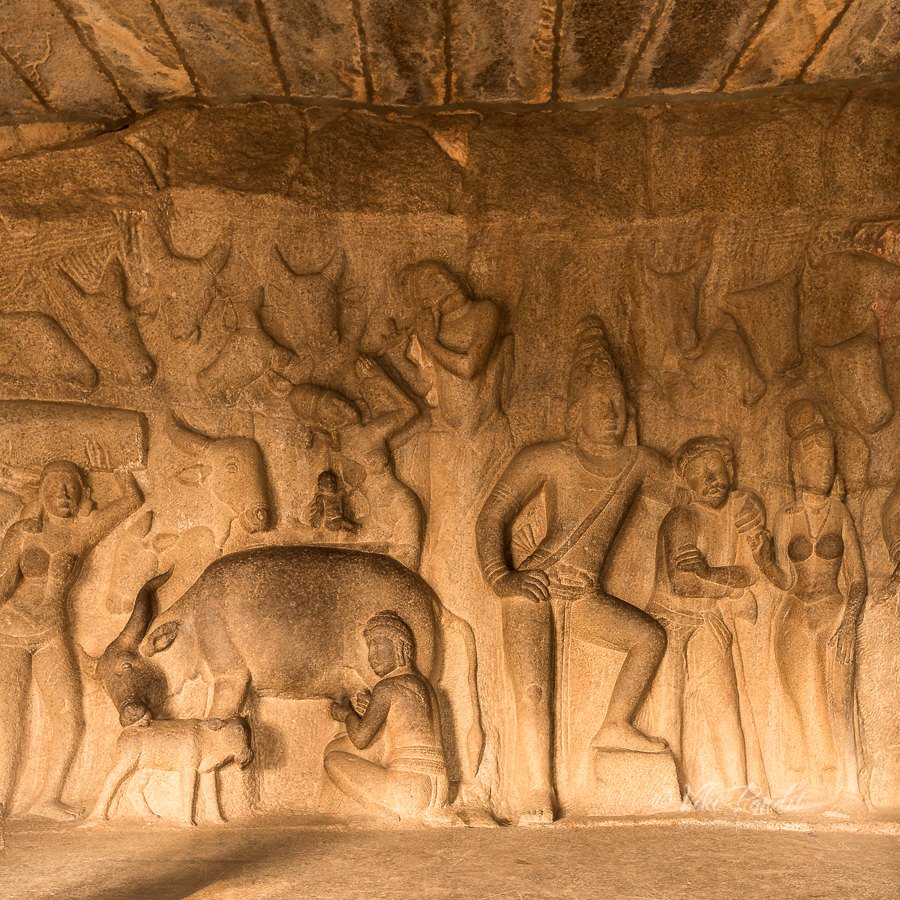
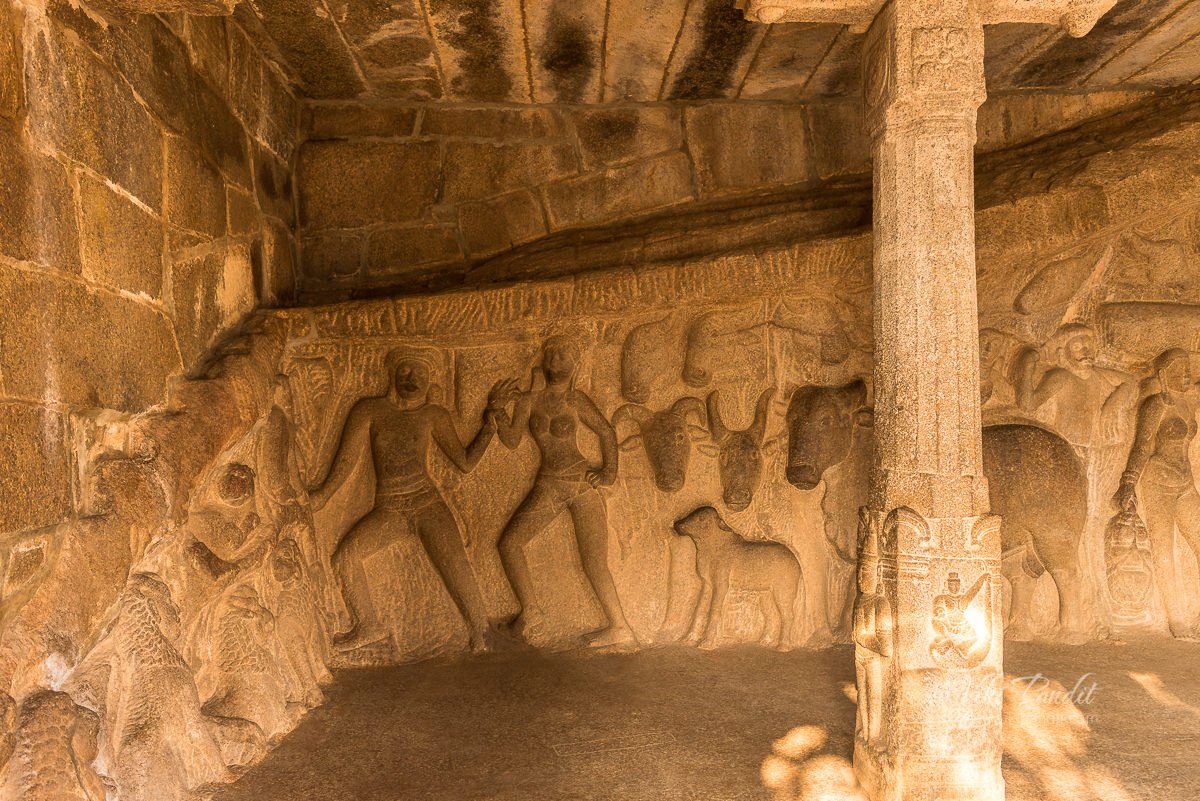

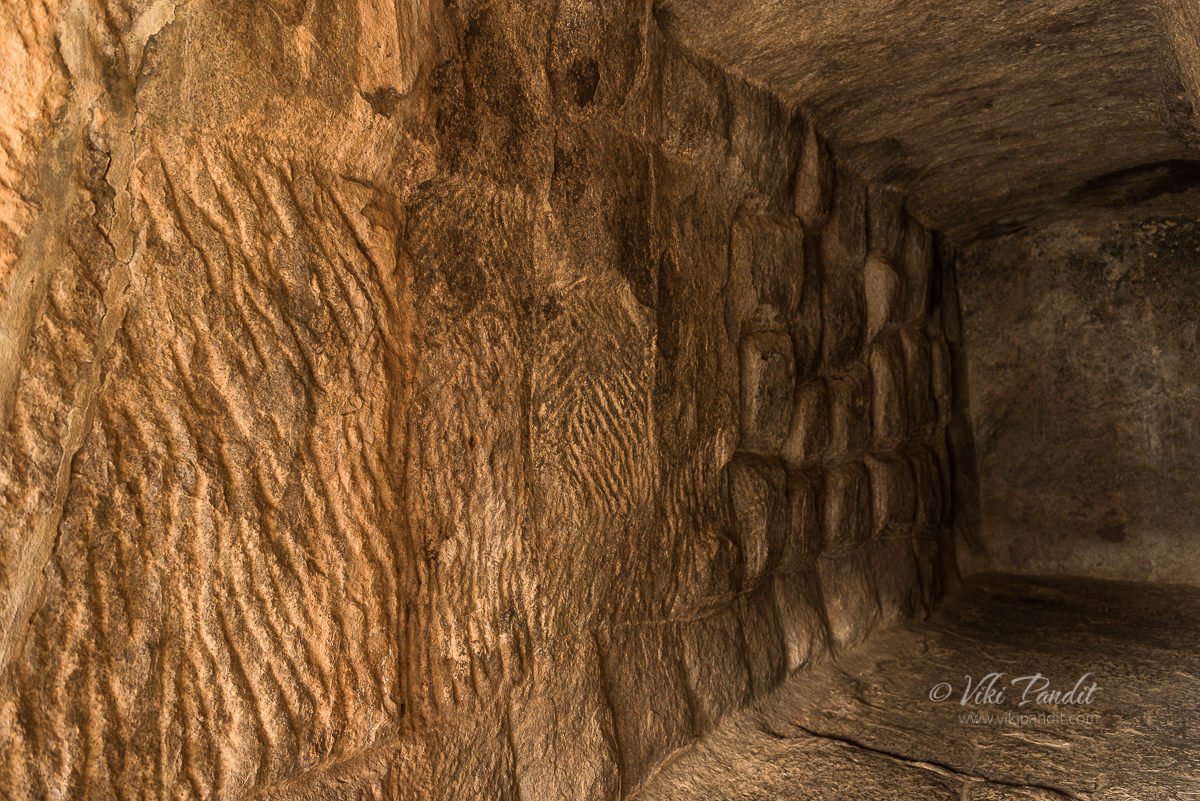


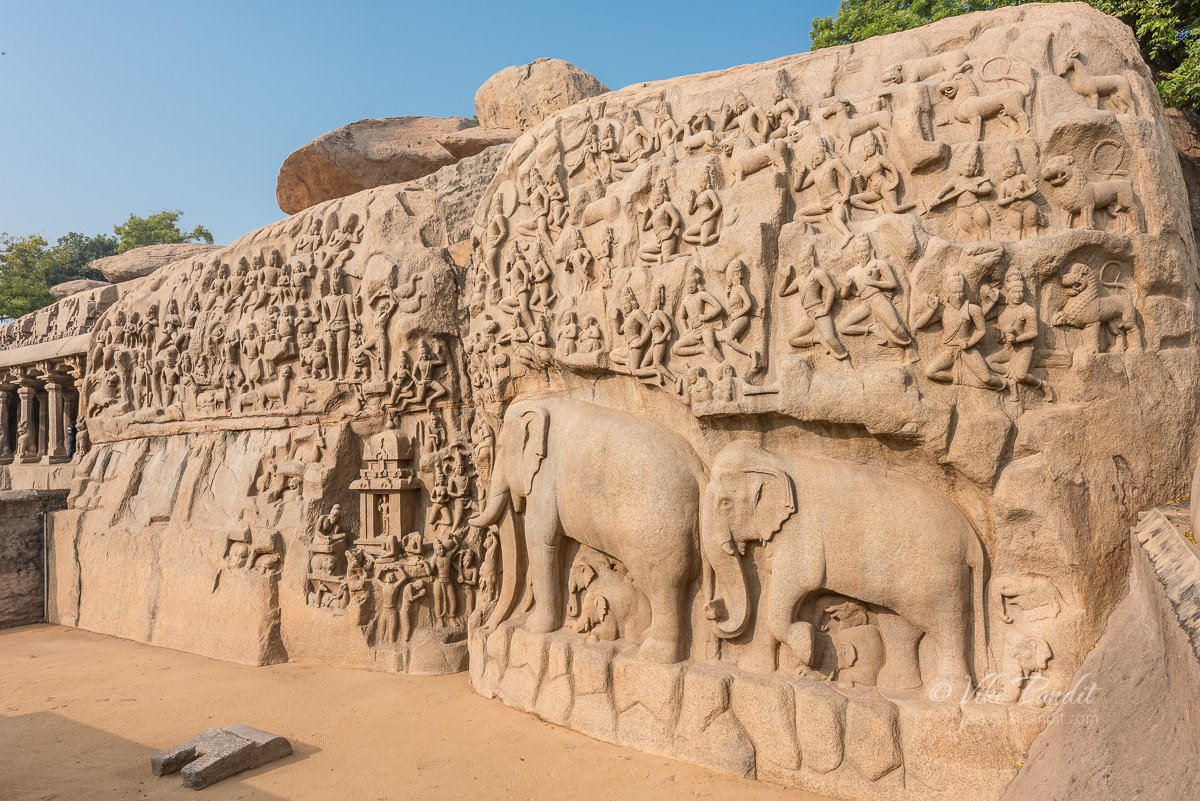
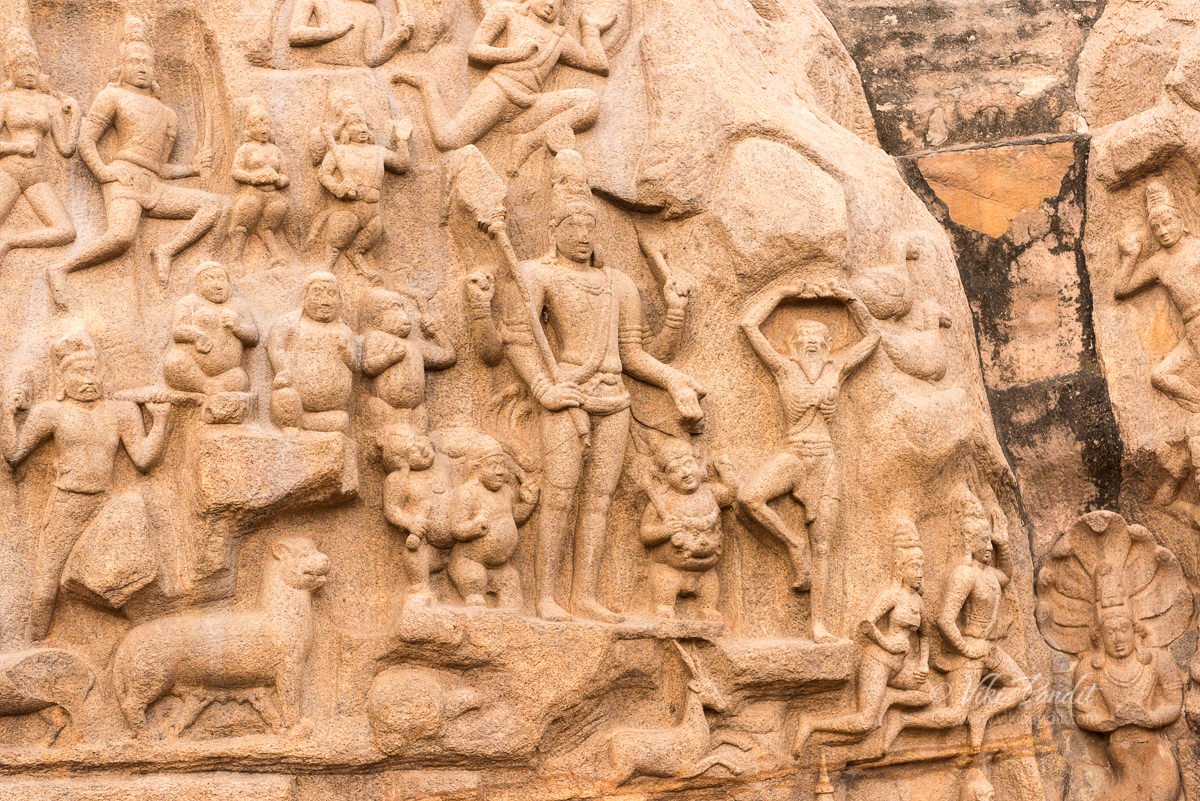
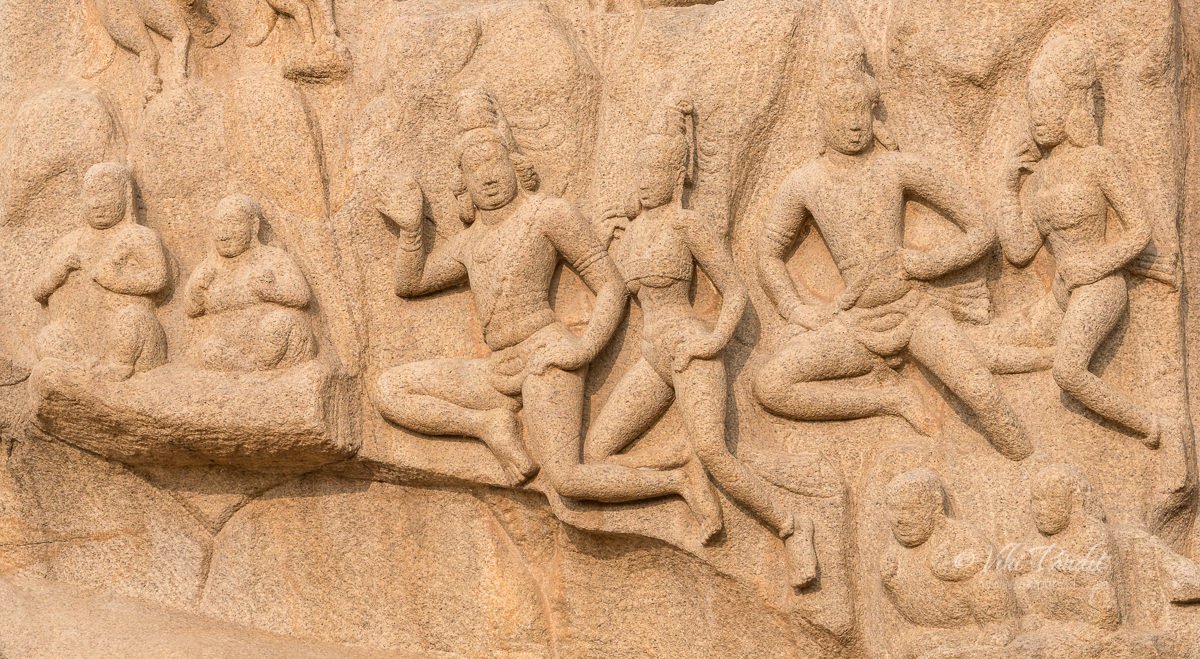


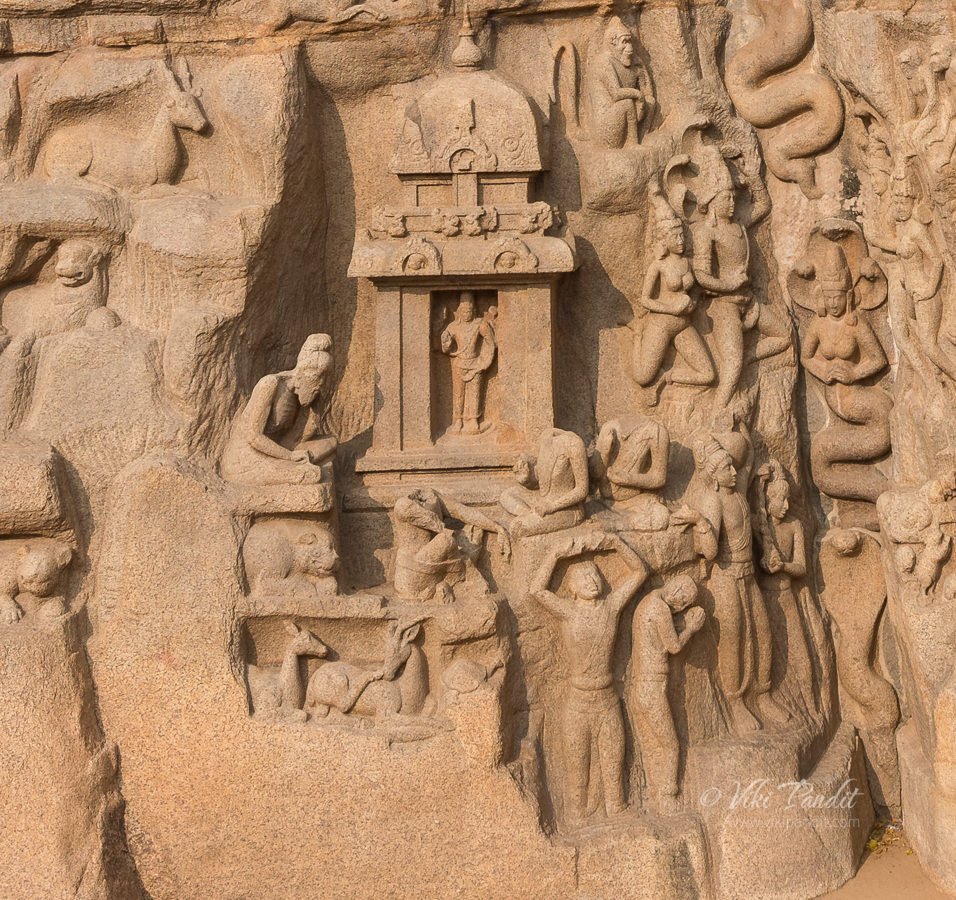


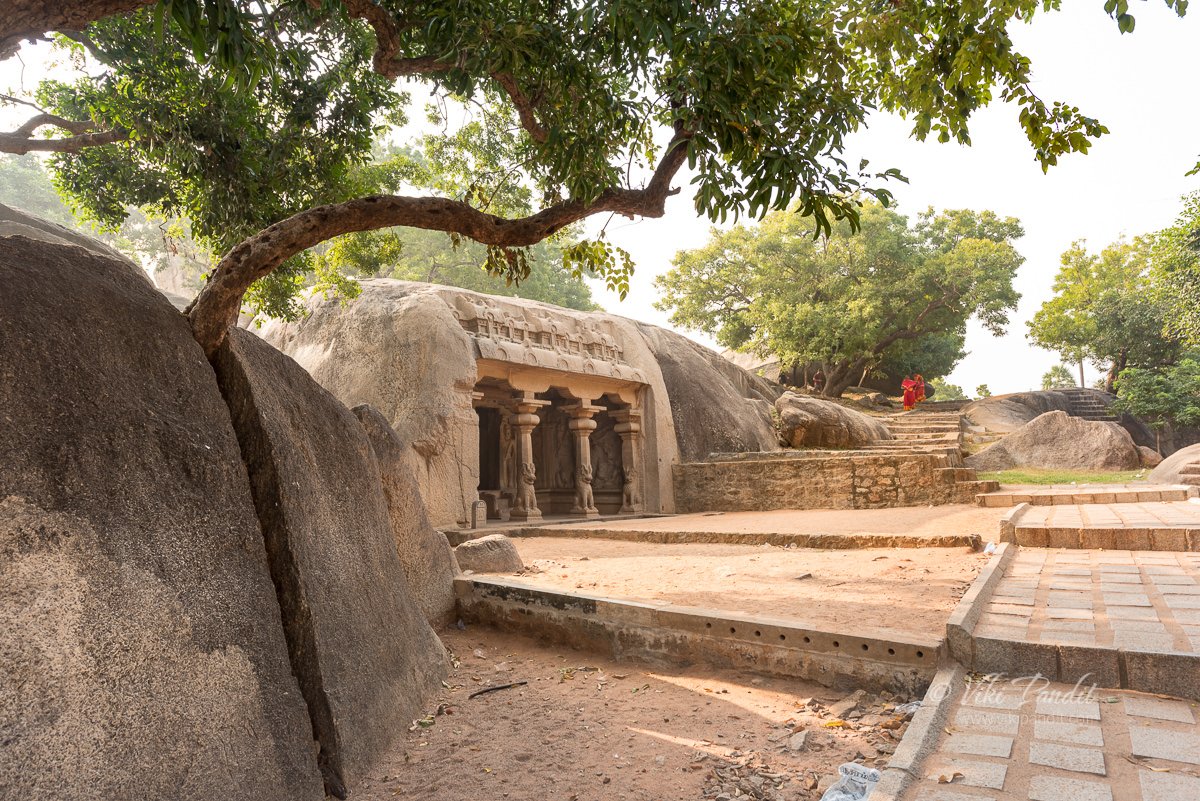
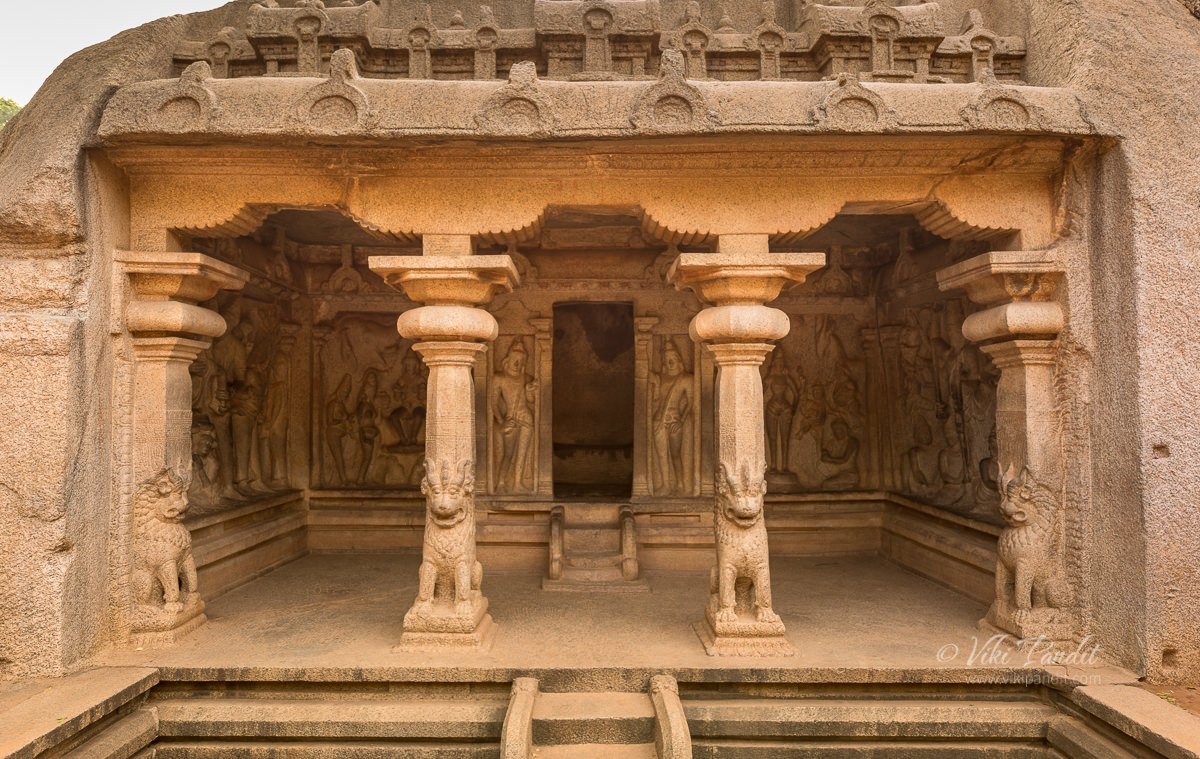

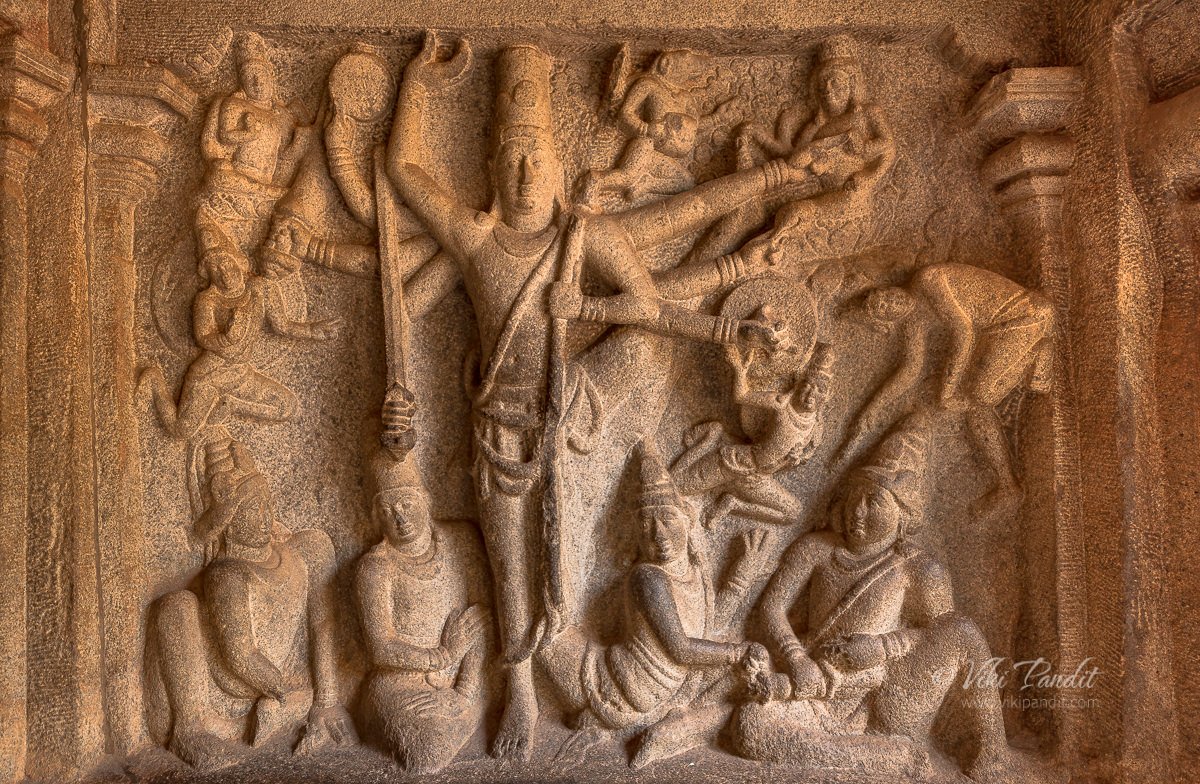
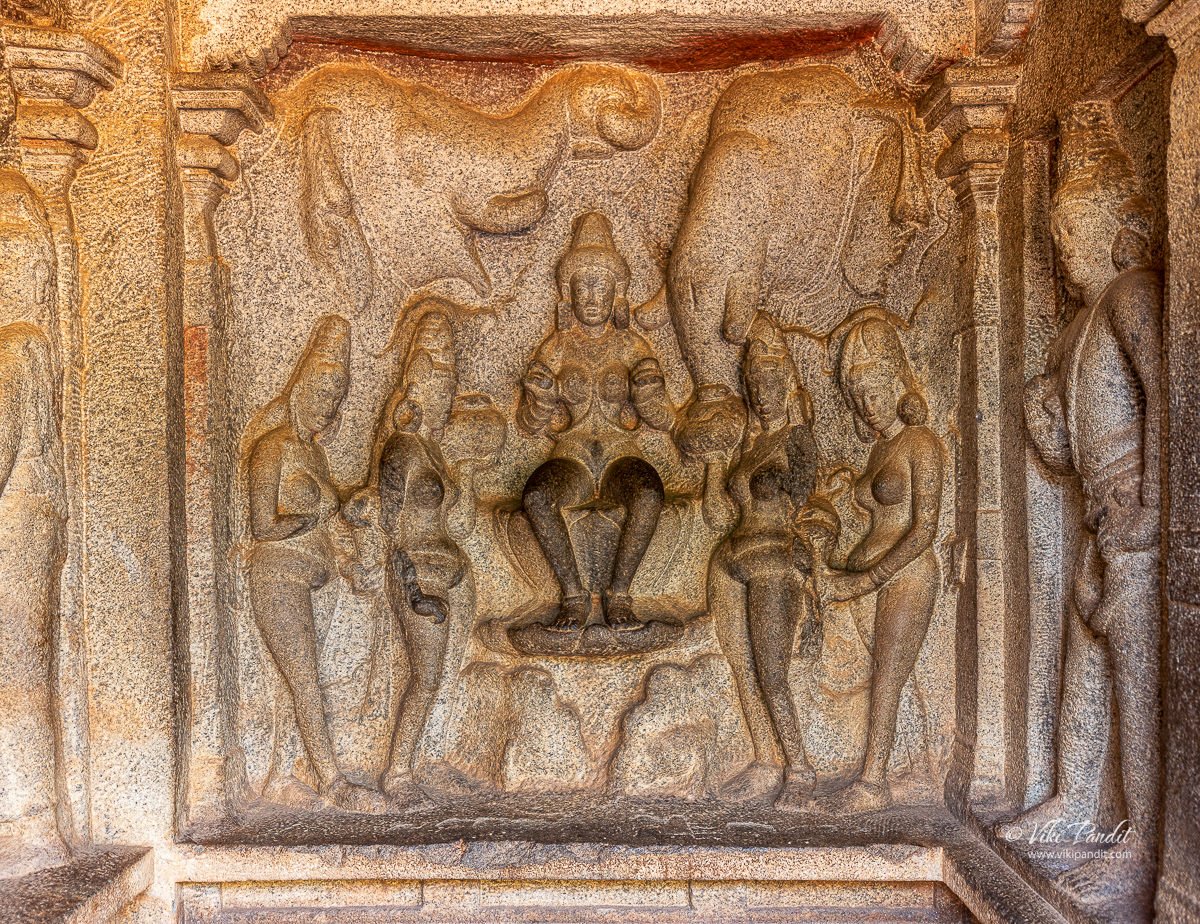

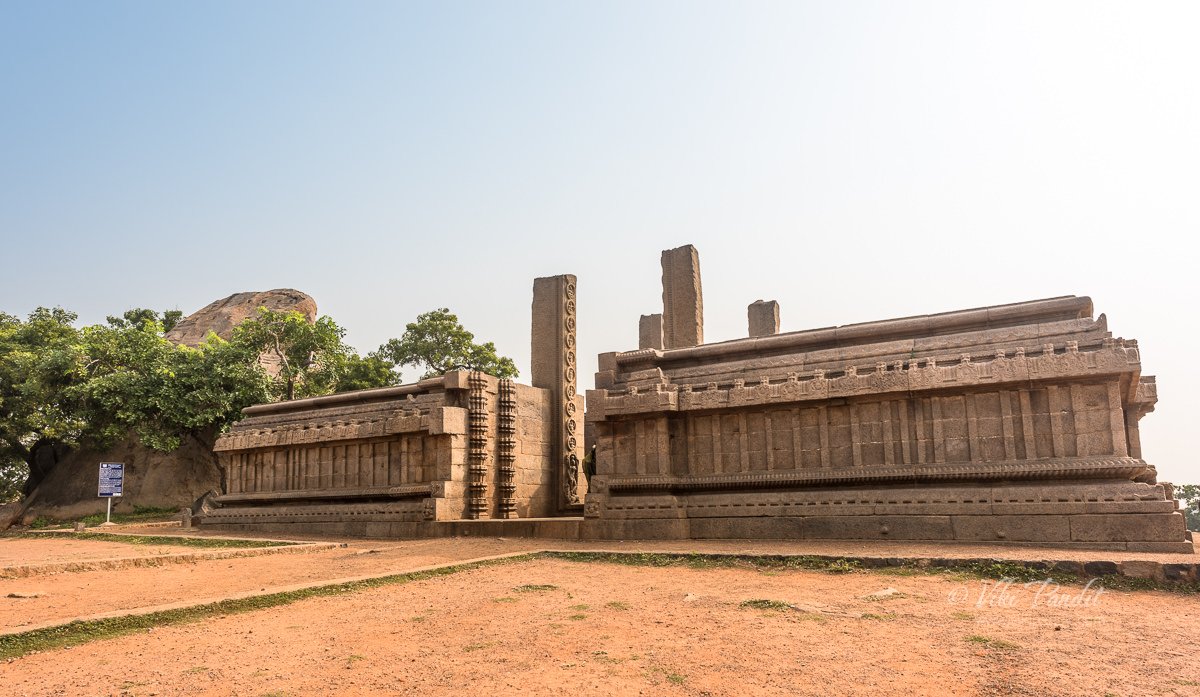
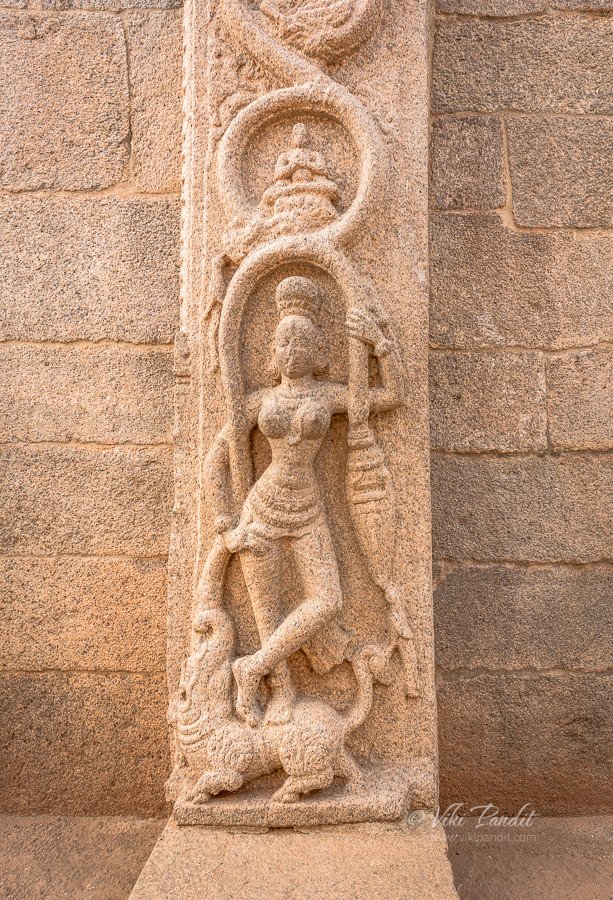


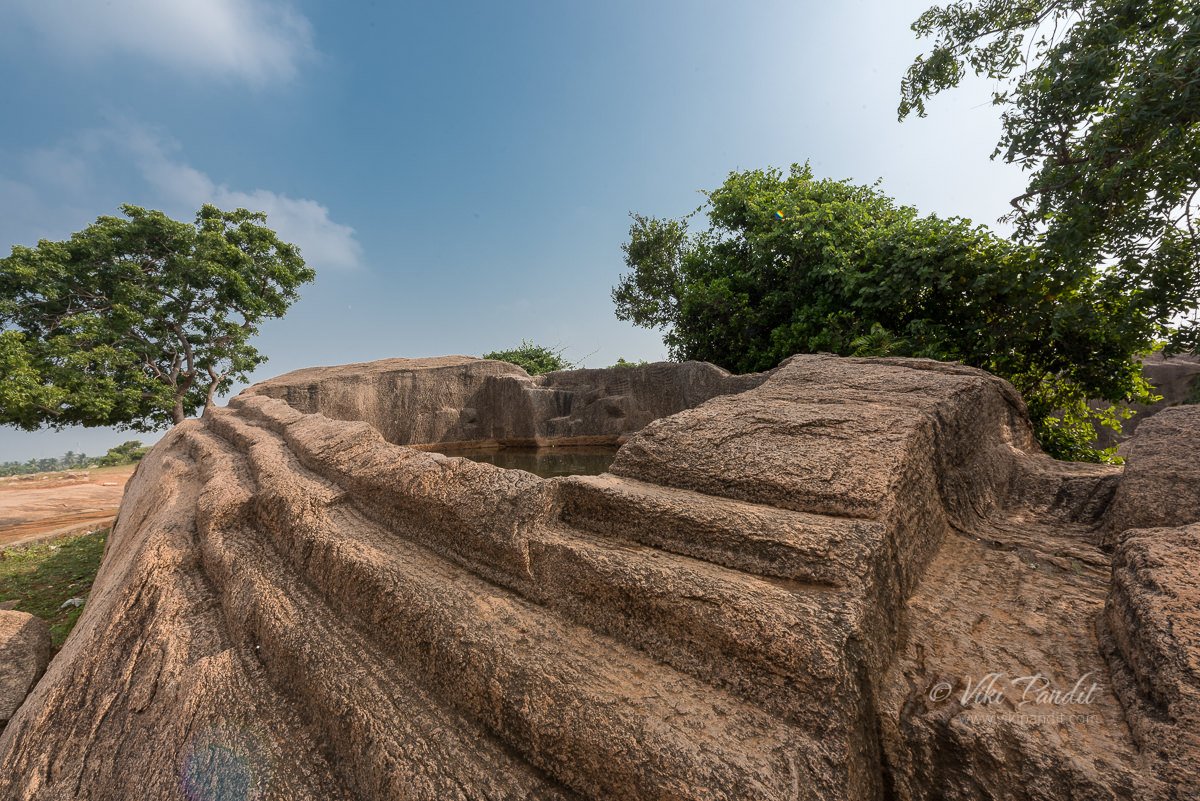
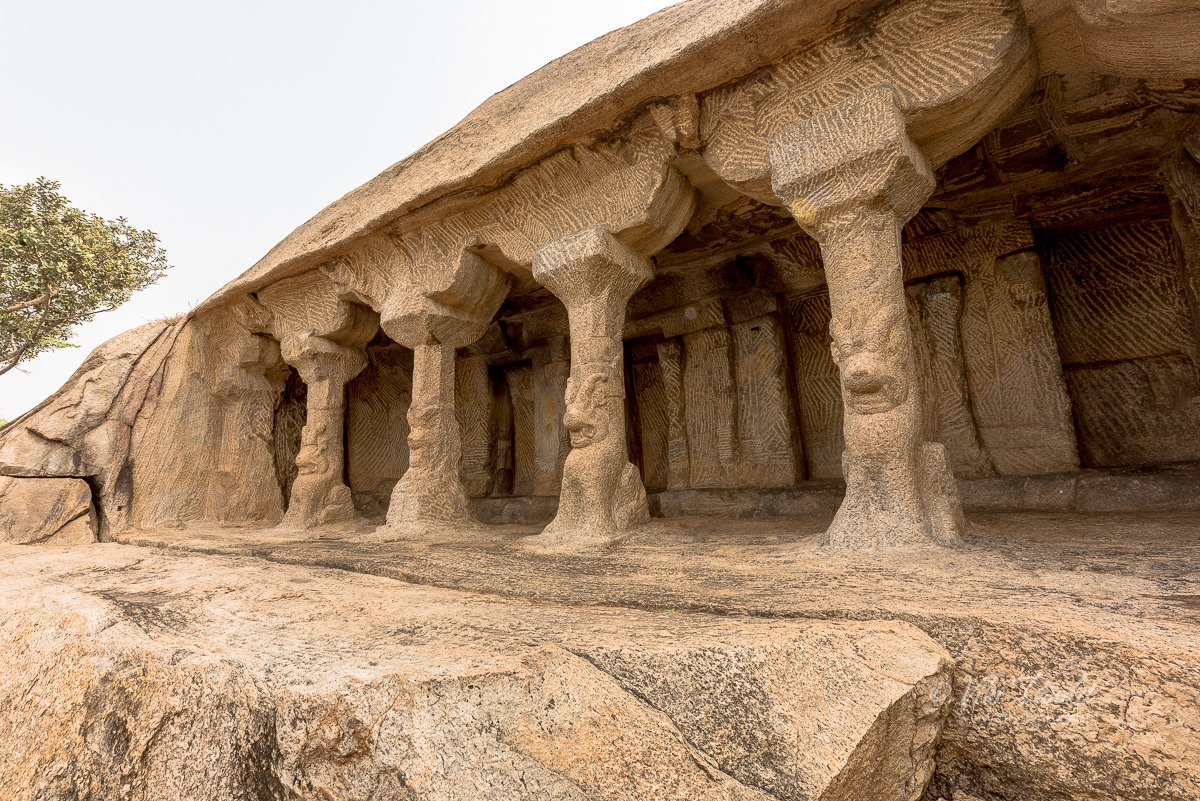
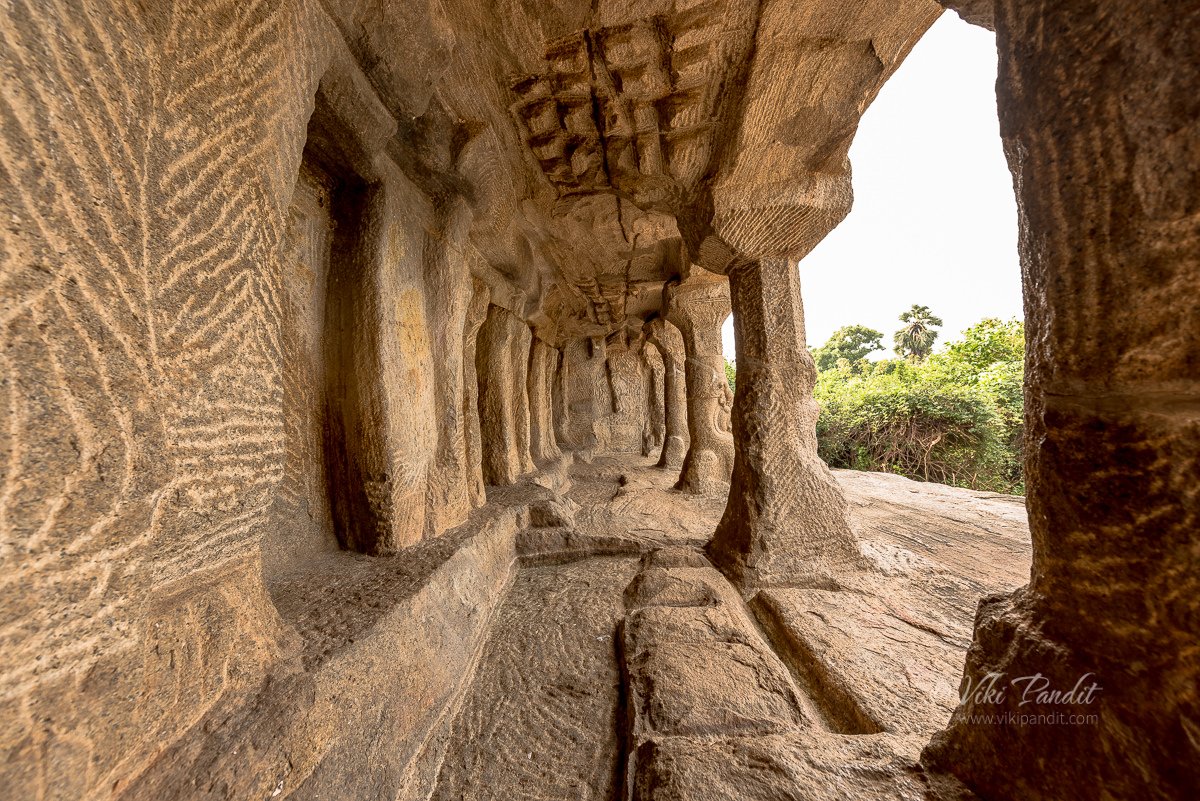

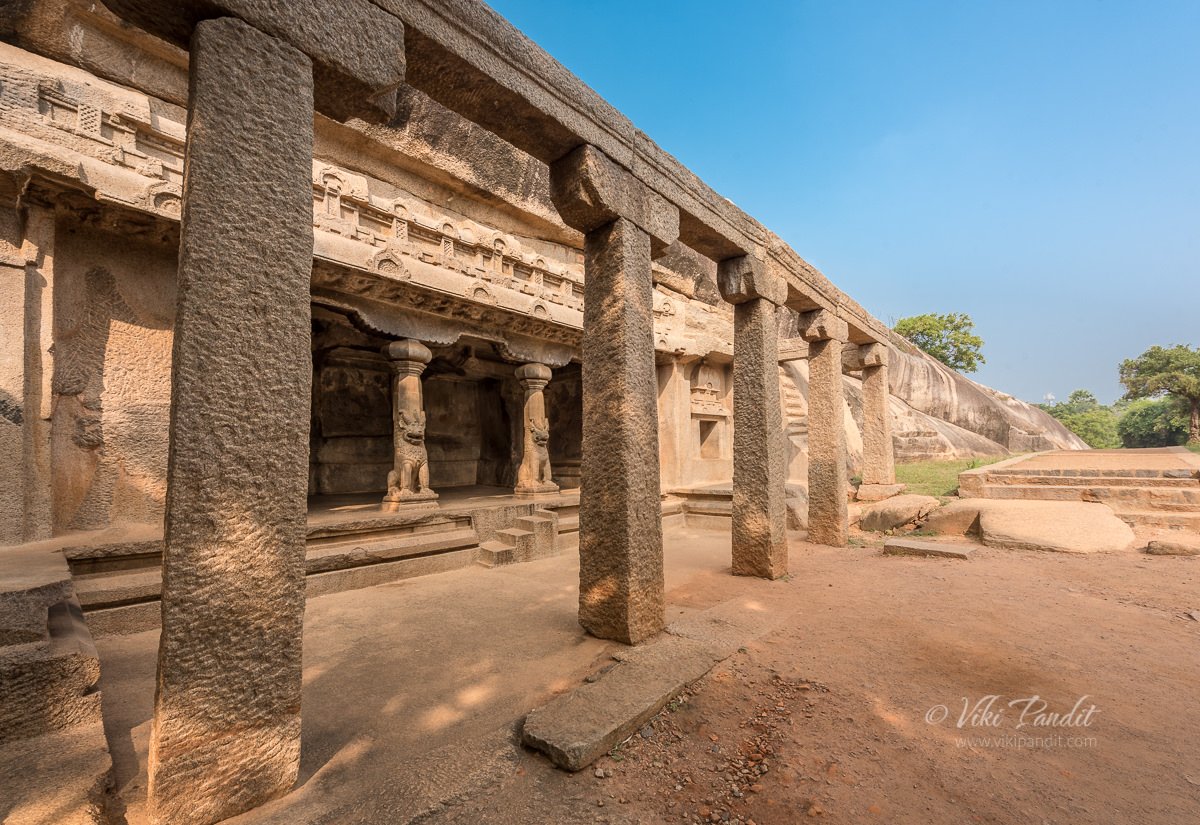
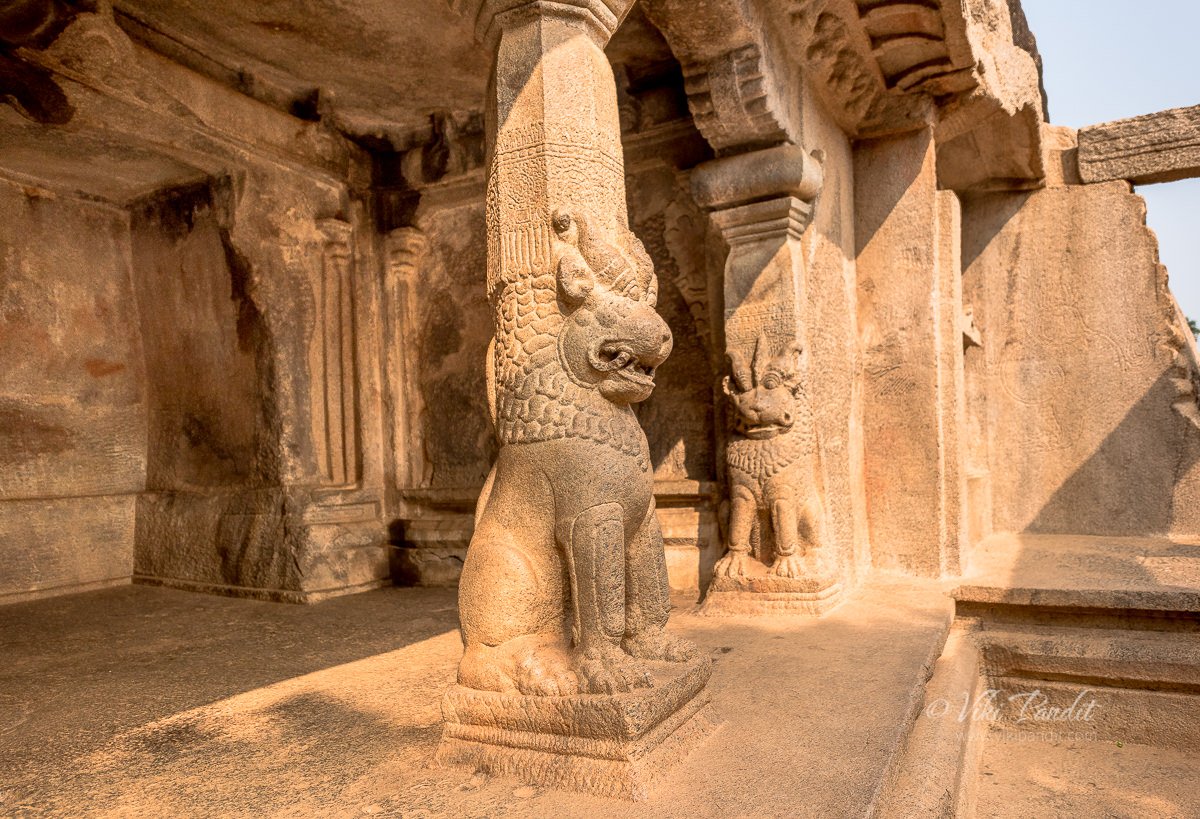
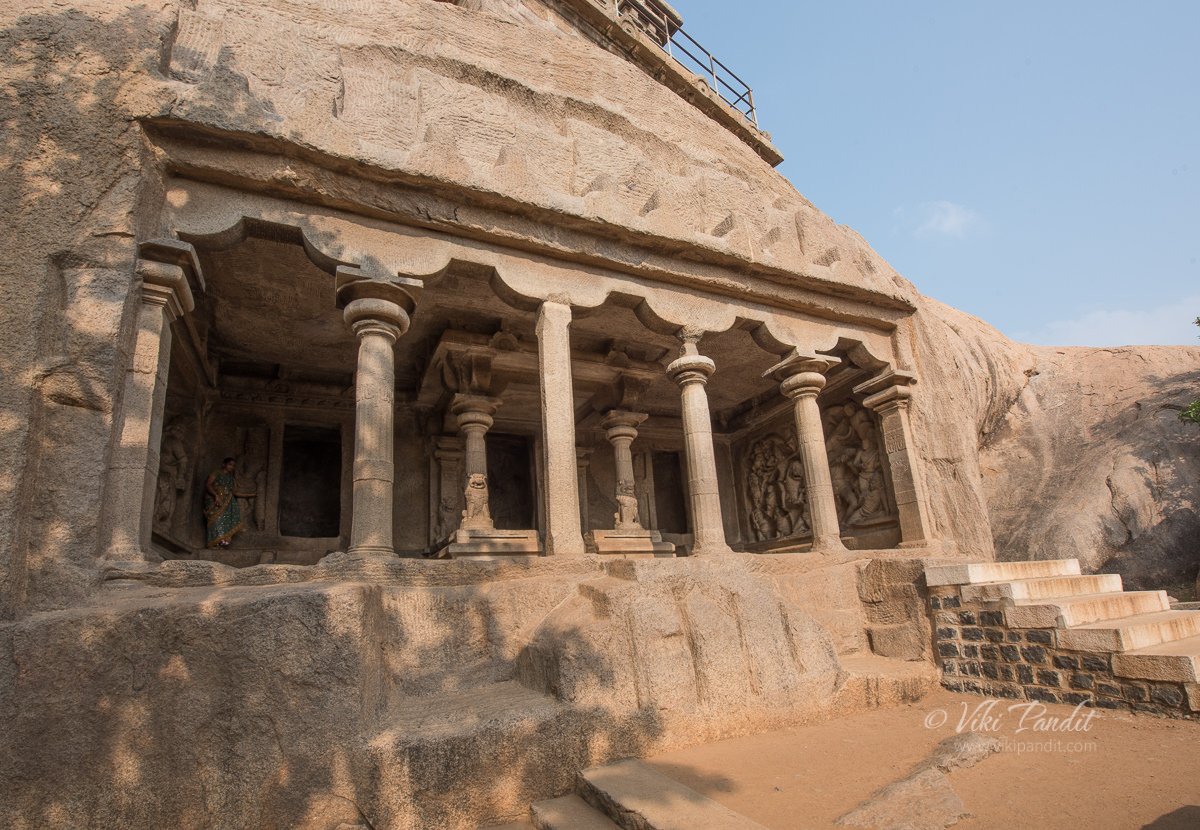


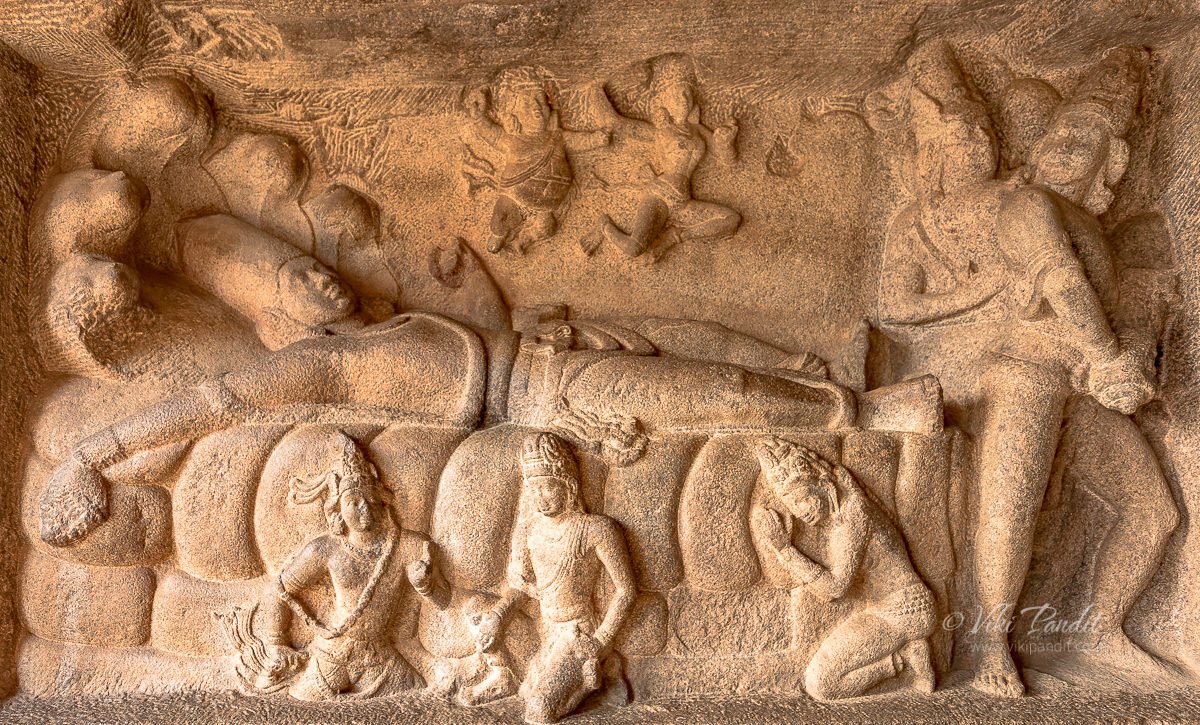

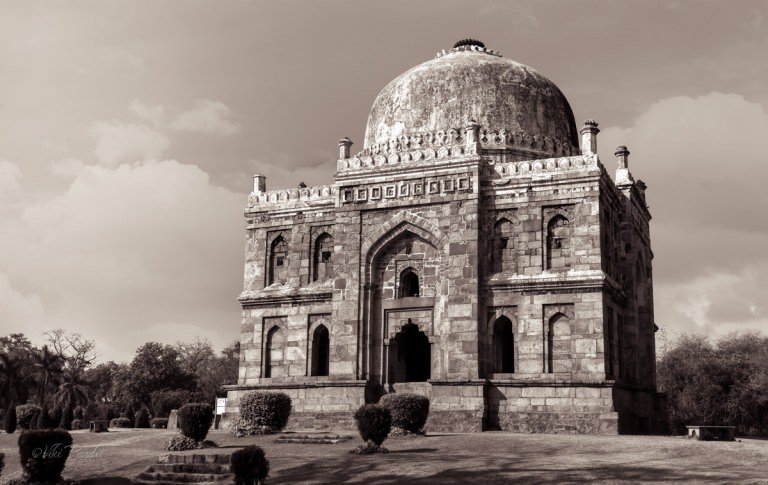

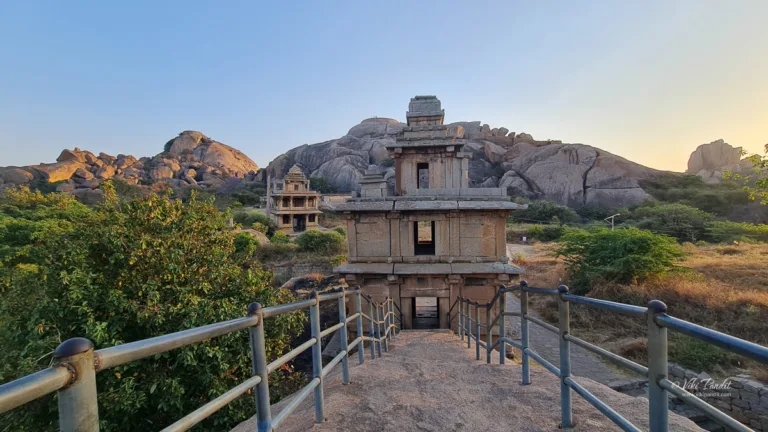
Thank you. This was an enjoyable read. I loved how we basically took the same route and it was great how this article took me back. It’s also allowed me to understand a little more about these great works. I’m sure it will be an enjoyable for others who are fortunate enough to experience these unique places.
Iam a temple architectect ,I just search reference picture of sea shore temple, but here, there is an amazing view of mamallapuram thank you for that picture and a beautiful article .
Thanks Janaki